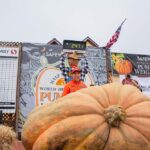“`html
Upcoming Polio Vaccination Campaign in Gaza: Key Details
An emergency polio vaccination initiative is set to commence on 14 October 2024 in Gaza, aiming to administer a second dose of the novel oral gaza-strip/” title=”Critical Lifeline: Why Humanitarian Pauses are Essential for Polio Vaccination Efforts in the Gaza Strip”>polio vaccine type 2 (nOPV2) to approximately 591,700 children under the age of ten.
This campaign follows a successful first round that took place from 1-12 September 2024, during which around 559,161 children were vaccinated—representing about 95% of eligible children at the governorate level based on independent post-campaign evaluations. Similar to its predecessor, this second phase will consist of three segments, each featuring three days dedicated to vaccination and one day for catch-up doses.
Importance of Vaccination Coverage
To effectively halt poliovirus transmission, it is essential that at least two doses of nOPV2 are administered. Achieving this goal necessitates vaccinating a minimum of 90% of all children across various communities and neighborhoods. In this upcoming round, vitamin A will be provided alongside the polio vaccine to enhance overall immunity for children aged between two and nine years.
Collaboration for Health Initiatives
The Palestinian Ministry of Health is spearheading this campaign in partnership with organizations such as the World Health Organization (WHO), UNICEF, UNRWA (United Nations Relief and Works Agency for Palestinian Refugees), among others. This effort forms part of an urgent response strategy aimed at controlling a polio outbreak identified on July 16, 2024, while also preventing further spread within Gaza.
Strategic Implementation Plans
A comprehensive network comprising health teams will be mobilized across designated health facilities and outreach locations. Mobile units are set to engage families residing in shelters or camps for internally displaced individuals. Local teams will focus on areas requiring special coordination efforts to ensure that all eligible children receive their vaccinations—including those who missed out during the initial round. The first phase highlighted how significant logistical hurdles—such as operating amidst damaged infrastructure and ongoing population displacements—can be surmounted through an exceptionally committed healthcare workforce coupled with strong community support for vaccination initiatives when humanitarian pauses are respected by all involved parties.
A Community-Centric Approach
Over 800 social mobilizers will actively inform families about the significance of receiving their second dose along with details regarding dates and locations for vaccinations. Various communication channels—including radio broadcasts, SMS alerts, and digital platforms available within Gaza—will amplify these crucial messages throughout the duration of the campaign.
Logistical Preparations
The logistical framework has been refined ahead of this second round; it includes training health workers and community volunteers while ensuring adequate supplies are available. Independent monitors will oversee data collection processes as well as delineate areas covered by mobile teams effectively.
A total supply chain has been established over recent months involving delivery logistics encompassing approximately 1.6 million vaccine doses along with essential equipment such as refrigerators (20 units), freezers (10 units), ice boxes (100 units), and vaccine carriers (800 units)—all necessary tools required to maintain vaccines within optimal temperature ranges between 2°C -8°C.
The Need for Humanitarian Pauses
The success rate for implementing this second vaccination phase hinges significantly upon securing humanitarian pauses; these breaks are vital not only for ensuring safety but also allowing healthcare workers uninterrupted access so they can provide vaccinations without fear or obstruction from conflict-related issues affecting local communities.
Tackling Accessibility Challenges
A major challenge remains reaching outlying populations who reside beyond areas where humanitarian pauses have been established; many were left unvaccinated during previous rounds due primarily due lack coordination approvals necessary for effective program oversight which would guarantee every child receives their immunization regardless location constraints faced by them currently.
An Urgent Call from WHO & UNICEF
The WHO alongside UNICEF has reiterated its urgent appeal directed towards all conflict parties urging them implement critical humanitarian pauses throughout Gaza prior commencing operations associated with upcoming rounds.
This request becomes increasingly pressing given new evacuation directives issued recently impacting accessibility towards hospitals thereby jeopardizing protection measures surrounding both medical facilities staff members engaged directly delivering care services needed most vulnerable populations including young ones requiring immediate attention through timely vaccinations against preventable diseases like poliomyelitis!
Editorial Notes:
- Circulating variant poliovirus type two was detected in six environmental samples collected within Gaza back July twenty-fourth year twenty-fourteen alongside confirmed cases involving paralyzed infants observed same month followed up additional five samples gathered September fifth year twenty-fourteen!
For more insights into Global Polio Eradication Initiative updates regarding outbreak responses campaigns please visit the initiative’s official website here!






